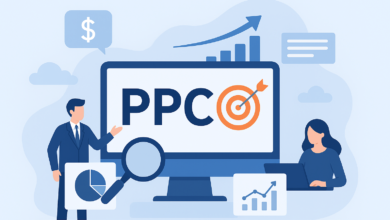Zero-Click Searches: How It’s Changing Search Engine Marketing Strategies

Things are moving fast in the world of search engines. Zero-click searches are a major change in how users interact with search engines. Traditionally, businesses relied on search engine marketing (SEM) to drive clicks and conversions. The current scenario is that Google is giving direct answers on the search results page more and more. Because of this, users are getting the information they need without having to click on any result. If you’re a business investing in SEM, this trend can present both challenges and opportunities for you. It’s time to change how you think about Google Ads. Clicks aren’t the only way to measure success anymore.
What Are Zero-Click Searches?
A zero-click search occurs when a user finds the information they need directly on the SERP without clicking on a website link. This happens through:
- Featured Snippets –A direct answer box at the top of search results
- Knowledge Panels –Google’s information boxes for brands, celebrities, or businesses
- Local Packs –A section displaying local business listings
- Direct Answers–Instant responses to factual queries (e.g., weather, conversions, definitions)
- People Also Ask (PAA) Boxes – Expandable questions offering quick answers, reducing the need for further clicks.
- Generative AI Summaries – AI-generated overviews that pull insights from multiple sources, eliminating the need for site visits.
- LLM-Powered Search – AI-driven experiences like Google SGE and ChatGPT search, delivering direct, conversational responses.
How Zero-Click Searches Impact SEM
1. Decreasing Click-Through Rates (CTR)
Since many search queries are answered within the SERP itself, fewer users click on paid ads. Even high-ranking paid search results may experience a drop in CTR. This heavily impacts campaign performance.
2. Higher Competition for Ad Visibility
As users are engaging less with traditional ads, you must compete more aggressively for visibility. You need to optimize your ad copy and bidding strategies.
3. A Shift from Clicks to Impressions and Engagement
The value of an ad campaign is no longer measured only by clicks. The key performance indicators now are brand recall, impression share, and assisted conversions.
How Zero-Click Searches Are Changing SEM Strategies
1. Focus on Impression-Based Metrics
Instead of clicks, you should measure impression share, engagement rates, and view-through conversions (VTCs). VTCs track users who see an ad but convert later.
2. Targeting “Position Zero” for Maximum Visibility
You should now aim for Position Zero, where Google’s featured snippets and knowledge panels appear. Strategies include:
- Using structured data markup to help Google understand content better
- Creating ad copy that matches with user intent to increase visibility
- Optimizing for question-based searches where Google extracts quick answers
3. Smart Bidding and AI-Driven Optimization
Google’s AI-powered Smart Bidding helps you stay competitive by dynamically adjusting bids based on user behavior. Strategies like:
- Target Impression Share to ensure ads are frequently seen
- Maximize Conversions to prioritize conversions over clicks
- Enhanced CPC (eCPC) to adjust bids based on real-time conversion likelihood
These bidding methods prioritize ad placements that capture high-intent users even if they don’t immediately click.
4. Leveraging Local and Voice Search Ads
Zero-click searches heavily impact local businesses. This is because Google My Business listings often cater to local search queries. You must:
- Optimize Google My Business profiles with updated details and FAQs
- Run local search ads that highlight key offerings directly in the SERP
- Use location-based keywords in ad copy
Since there has been a rise in voice search, you should also include conversational long-tail keywords to match spoken queries.
5. Enhancing Ad Extensions for Greater Visibility
Since fewer users click, ad extensions help increase engagement. You should:
- Use structured snippets to provide key details within the ad
- Add call and location extensions for local conversions
- Use price and promotion extensions to persuade users to take action
6. Expanding Paid Marketing Channels
Instead of relying solely on Google Ads, explore:
- YouTube Ads & Discovery Ads– Video content remains highly engaging
- Social Media Ads – Platforms like Facebook, Instagram, and LinkedIn offer diverse ad formats
- Programmatic Advertising – Automated bidding on digital ad placements to improve targeting
7. Retargeting to Bring Back High-Intent Users
Since many users engage with search ads but don’t click, retargeting campaigns can help reconnect with them. You should:
- Use display and video retargeting ads to reinforce brand presence
- Utilize Google’s audience insights to refine targeting
- Run cross-channel remarketing campaigns on Facebook, Instagram, and YouTube
Final Thoughts
Zero-click searches are revolutionizing SEM. It’s less about direct clicks and more about visibility, engagement, and strategic ad placements. If you can adapt to changing user behavior, you will continue to grow despite decreasing CTRs.
Looking for an experienced digital marketing agency in Kerala to optimize your search engine marketing strategy? Viral Mafia is here to help. Contact us today to stay ahead in the digital race!






